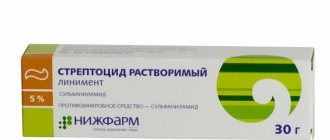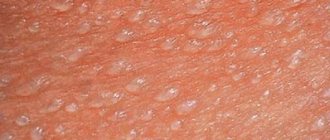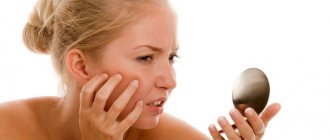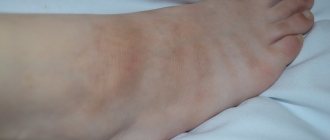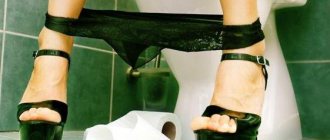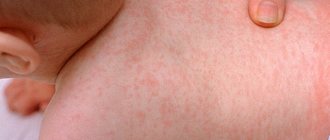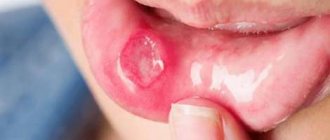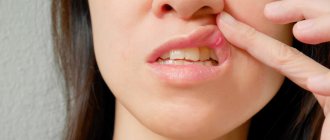Hemorrhoids in men
Male hemorrhoids are varicose changes in the cavernous veins of the rectum and/or anal area, resulting in the formation of hemorrhoids. Men aged 30 to 50 years are most prone to this disease. But, unfortunately, hemorrhoids occur in young men and even children.
It should also be noted that in men, hemorrhoids are mainly detected in the later stages, when complications are already present. Patients are in no hurry to contact a specialist at the first signs of illness: either because of shame, or because they are confident that they can cope with the problem on their own.
Classification
There are several bases for classifying the hemorrhoidal process.
According to the localization of the process, they are distinguished:
Types of hemorrhoids in men
- Internal hemorrhoids. This form is characterized by internal localization of the pathological process. The bumps are located in the middle and upper parts of the rectum. It is impossible to visually determine the presence of nodes, unless by conducting an endoscopic examination.
- External hemorrhoids. Develops in the outer parts of the rectum and rectal area. Hemorrhoids are visible to the naked eye. Bleeding is more intense.
- Combined (mixed) form of the disease. Hemorrhoids form in both the middle and lower intestines. This is the most complex form of the disease.
Another basis for classification is the stages of the pathological process.
A four-stage classification of the disease is generally accepted:
Stages of hemorrhoids in men
- The first stage of hemorrhoids in men. At this stage, the disease is just developing and does not yet make itself felt with typical symptoms. Minor pathological manifestations are possible, such as burning and itching in the rectal area. Bleeding is weak and is detected only after blotting the anus with toilet paper. There are no nodes as such yet or they are so small that they are not visible to the naked eye.
- Second stage. Bleeding becomes stronger, but is not yet so intense as to lead to serious consequences. The hemorrhoid becomes visible to the naked eye. After the lump falls out, you can straighten it yourself without much effort.
- The third stage of hemorrhoids. It is characterized by the development of large nodes, which often fall out during physical activity. You can still fix them yourself.
- Fourth stage. This is the last, advanced stage of hemorrhoids. The nodes are large in size and extend deep into the rectum. They fall out even at rest. It is impossible to set them. Intense bleeding is observed. Serious complications are possible.
Causes of the disease
The development of hemorrhoids is based on two reasons - dysfunction of the vascular apparatus of the anorectal region and weakness of the rectal muscles.
In the submucosal layer of the rectum and under the skin of the anal area there are cavernous bodies, which consist of hemorrhoidal veins.
Various negative factors lead to a loss of tone in the walls of the venous vessels, as a result of which the balance between the inflow and outflow of blood from the hemorrhoidal veins is disrupted. These vessels cannot cope with the load placed on them, as a result of which they become overfilled with blood, and their walls are stretched and deformed with the formation of hemorrhoidal cones.
In the absence of timely treatment, hemorrhoids enlarge and begin to fall out through the anal ring. This occurs through dystrophic changes in the longitudinal rectal muscle, which can no longer hold the hypertrophied cavernous veins inside the rectal canal.
Conservative therapy
At the earliest stages of the disease, the patient may well improve his well-being with the help of medications. However, the appointment must be made by a doctor after examination and tests. Much depends on the type of pathology.
To treat external hemorrhoids, ointments are used (Hepatrombin, Heparin, Vishnevsky, and so on). They are applied exclusively to the cleaned anus. If the formation is located internally, then suppositories are recommended (“Proctoglivenol”, “Relief” and others). They should only be inserted after a bowel movement. Often these forms of medications are combined with oral medications (Detralex, Troxevasin, Venarus). You can take medications for a short time, and if there is no effect, you should think about other methods of correction.
Provoking factors for hemorrhoids
The described pathological processes are facilitated by a number of provoking factors, namely:
- sedentary lifestyle;
- unhealthy and unbalanced diet;
- chronic constipation or diarrhea;
- alcohol abuse;
- hereditary predisposition;
- excessive physical activity associated with lifting weights;
- volumetric formations of the pelvic organs;
- liver cirrhosis and others.
The causes and treatment of hemorrhoids are interconnected, since a positive effect from antihemorrhoidal therapy can only be achieved after eliminating the listed factors.
Causes
Young men are susceptible to the disease due to a sedentary lifestyle and those experiencing enormous physical exertion. There are several reasons that lead to the development of hemorrhoids in men:
- Bad habits. Due to the concentration of toxins obtained from tobacco smoke and alcohol, there is a sharp flow of blood into the pelvic area. Vessels that cannot cope with such a load undergo pathological changes.
- Unbalanced diet. Most men prefer meat dishes to vegetables and cereals and abuse hot spices. As a result of such nutrition, intestinal motility slows down, which leads to constipation. Constipation provokes the development of hemorrhoids.
- Excess body weight.
- Heavy lifting, heavy physical activity. Strength exercises without medical supervision, as well as heavy physical activity, cause tension in the annular muscle of the anus.
- Physical inactivity. The result of prolonged periods of sitting at a table or standing, associated with professional activities, is congestion in the pelvic area.
- Hereditary factor. In 8 out of 10 cases, the disease occurs in those men whose father or grandfather suffered from hemorrhoids.
- The presence of inflammatory processes in the bladder or prostate gland often leads to circulatory disorders of the cavernous veins.
- Age-related changes caused by weakness of the venous valves. With age, women are more often diagnosed with varicose veins of the lower extremities, and hemorrhoids are diagnosed in men.
- Anal sex. During sexual intercourse, sphincter stretching occurs, mechanical damage to the anus and irritation of the mucous membrane occur, which causes hemorrhoids.
In addition to the above reasons, there are a number of factors that provoke the development of the disease: the use of rough toilet paper, a state of constant stress and anger, cirrhosis of the liver and neoplasms in the pelvis.
Classification of hemorrhoids in men, photo
The classification of hemorrhoids is based on the location of the hemorrhoids and the course of the disease.
Forms of hemorrhoids
Depending on the location of the nodes, it is customary to distinguish three forms of hemorrhoids: internal, external and combined.
Internal hemorrhoids are varicose veins of the cavernous veins of the submucosal layer of the rectal canal, which are located above the dentate line of the anus. At the initial stages of the disease, the nodes are located inside the anal canal, but over time they begin to fall out through the anal ring.
External hemorrhoids are a form of the disease in which deformation and hypertrophy of the saphenous veins located below the dentate line around the anal ring occurs.
Combined hemorrhoids are the most severe form of the disease and involve the simultaneous presence of internal and external hemorrhoids.
According to the course, hemorrhoids are divided into acute and chronic.
Acute hemorrhoids is a complicated course of the chronic form of the disease in the form of anorectal thrombosis.
Chronic hemorrhoids are divided into several stages.
Stages of hemorrhoids
In the clinical course of internal chronic hemorrhoids, the following stages are distinguished:
Stage 1: hemorrhoids are small and located inside the anal canal;
Stage 2: The hemorrhoid becomes large enough to sag through the anal ring, which occurs during bowel movements. After bowel movement, the lump moves into the rectal canal on its own;
Stage 3: hemorrhoids fall out of the anus during bowel movements, as well as with intense laughter, coughing, sneezing or lifting weights, but then return to their place on their own or patients reset them manually;
Stage 4: at this advanced stage, hemorrhoids fall out at the slightest physical exertion, but can no longer be reduced on their own.
In the clinical course of external hemorrhoids, three degrees are distinguished, namely:
- first degree: at this stage of the disease, the external cones are small and have no signs of inflammation;
- second degree: dense inflamed hemorrhoids are determined against the background of edema and hyperemia of the anal tissues;
- third degree: the inflammatory process spreads to all tissues of the anorectal area. In the area of the anal ring, tumor-like formations are identified, which are inflamed cherry-colored hemorrhoids. (see photo).
Hemorrhoids: types, stages
The causes, symptoms, and treatment of the pathology will be presented to you below. Before this, it is worth giving a description of the disease itself, as well as talking about its main forms and types.
Hemorrhoids are formations that are located on the walls of the rectum. It appears due to defects in the intestinal walls, as well as disruption of the blood vessels. As hemorrhoids progress, the vein walls expand greatly, and the blood stagnates and thickens. Subsequently, the inflammatory process begins. According to its location, the hemorrhoidal node can be internal or external. Education also has 4 main stages:
- 1 – nodes are small in size and practically do not manifest themselves;
- 2 – the first signs of hemorrhoids are determined, the inflammatory process begins;
- 3 – the nodes do not adjust on their own after they fall out, but you can return them to their place with your hands;
- 4 – there is no way to set the fallen nodes, a strong inflammatory process progresses, palpation turns out to be unbearably painful.
In addition to the types described, hemorrhoids can be congenital or acquired. The second type of pathology occurs in 80 percent of all cases. Also, acquired hemorrhoids can be an independent disease or a consequence of another pathology.
How does hemorrhoids manifest in men?
In most cases, the first symptoms of hemorrhoids are invisible, and men rarely pay attention to them, ignoring their problem. All this leads to the fact that the disease is detected in the second and sometimes third stages.
The first signs of hemorrhoids in men
The first signs of hemorrhoids in men may be the following:
- discomfort in the anal canal, especially after visiting the toilet;
- feeling of incomplete emptying of the rectum during bowel movements;
- feeling of pressure in the rectal canal;
- itching and burning in the anus;
- pain in the rectum during bowel movements;
- the release of a small amount of blood during bowel movements, which can be seen as scarlet drops on the stool or toilet paper.
If a man does not consult a specialist, the disease progresses: the described symptoms increase, becoming permanent, and hemorrhoids begin to fall out of the anus. Therefore, you cannot ignore your problem or be ashamed of it; you need to go to the nearest medical institution and see a proctologist or surgeon.
Common symptoms in men with hemorrhoids
Hemorrhoids in men can manifest themselves with the following symptoms:
- frequent constipation that occurs due to blockage of the lumen of the rectal canal by nodes;
- mucous discharge from the anus, which irritates the perianal tissues;
- hemorrhoidal bleeding during and after defecation;
- pain during bowel movements. When hemorrhoids are pinched or the anal ring is torn, the pain becomes permanent;
- anal itching, which is caused by weeping discharge from the anus, anal fissures and eczema of the perianal folds;
- sagging hemorrhoids;
- pain in the lower abdomen and lower back;
Signs and symptoms of internal hemorrhoids in men
Symptoms of internal hemorrhoids depend on the stage of the disease.
At the initial stages there may be no manifestations of the pathological process, but as the disease progresses, the clinical picture of hemorrhoids is supplemented by symptoms of its complications. The presence of internal hemorrhoids can be identified by the following symptoms:
- cleansing a foreign body in the rectum;
- feeling of fullness in the anus;
- rectal bleeding after bowel movements;
- itching and burning in the anus;
- pain in the anus during and after defecation;
- detection of tumor-like formations in the anus after defecation, etc.
If you discover such a combination of symptoms, we strongly recommend that you consult a specialist, since a more serious and dangerous disease, such as rectal cancer, may be hiding under the picture of hemorrhoids.
Signs and symptoms of external hemorrhoids in men
External hemorrhoids can be independently recognized at the start of the disease, since they are located in the rectal position and the patient can see them with the naked eye.
External hemorrhoids differ from internal hemorrhoids by severe pain, which is present from the first days of the disease. In addition, the pain bothers the patient even at rest.
Also, hemorrhoidal cones of external localization are easily injured during defecation, sitting on a hard chair, tight underwear or clothing, which also causes severe pain.
Another symptom of external hemorrhoids is bleeding, which occurs when hemorrhoids are injured by feces.
The first signs of pathology
Hemorrhoids in men at the very beginning give symptoms that are usually ignored: periodic itching in the perianal area (who doesn’t?), some vague feeling of discomfort (it’s not clear what this can be associated with).
Anxiety appears with the first streak of blood in the stool after defecation and soreness in the anal area. But it’s easier to shrug off these symptoms than to go to an extremely unpleasant consultation with a proctologist.
Only over time, when there is a constant sensation of a foreign body in the anus, and bowel movements never bring relief, does a man begin to think about what is disturbing his comfortable existence.
Most often, this is an emerging internal hemorrhoidal pathology. Confirmation is additional bleeding at the time of defecation. Bloody discharge does not mix with feces, but is localized from above in the form of drops or streams.
The very first signs of hemorrhoids in men are discomfort in the rectal area after defecation, a feeling of incomplete emptying of the rectum, a feeling of pressure on the walls of the rectum, burning and itching of the anus, pain during defecation, blood in the stool noticeable on toilet paper.
It's time to consult a specialist doctor, then the symptoms can be relieved without surgery, only with diet and medications. Otherwise, the symptoms will increase, the pathology will progress, and the hemorrhoids will increase in size and fall out of the rectum. Then you can't do without surgery.
Why are hemorrhoids dangerous in men?
In the absence of adequate treatment for hemorrhoids, men are at risk of developing complications.
The most common consequences of hemorrhoids are:
- anal tears. This complication occurs due to constipation, since the epithelium of the anal ring is damaged by hard feces;
- pinching of internal hemorrhoids in the anal ring. This consequence of the disease is accompanied by severe pain and dangerous necrosis of the prolapsed node;
- anorectal thrombosis. This complication is observed more often with external hemorrhoids and is characterized by the formation of a blood clot inside the hemorrhoids;
- necrosis of the hemorrhoidal node. This complication occurs against the background of strangulation or thrombosis of nodes, due to impaired blood supply;
- paraproctitis. The human intestine contains a large number of different bacteria that can penetrate deep into the tissues of the anorectal zone through cracks, causing the formation of an abscess. Paraproctitis is dangerous because it can lead to blood poisoning.
Professional activity and hemorrhoids
The causes of this in men are often associated with prolonged sitting. The disease develops in drivers, programmers, accountants, computer game lovers and simply lazy people leading a sedentary lifestyle.
If a man has to sit for up to 6 hours a day, then blood stagnation occurs in the pelvic organs. Clothing can aggravate the situation: tight swimming trunks, jeans, trousers. As a result, after just a few years of this lifestyle, a hemorrhoid appears.
How to treat hemorrhoids in men?
Hemorrhoids can be cured only with the help of complex therapy, which consists of the following principles:
- lifestyle correction: giving up bad habits, maintaining an active lifestyle, dosing physical activity;
- healthy and balanced diet: exclusion from the diet of foods that contribute to intestinal dysfunction and sufficient consumption of foods rich in plant fiber;
- conservative therapy: a combination of systemic medications with the use of topical agents;
- minimally invasive methods of surgical correction of hemorrhoids;
- radical surgical methods.
The success of treatment directly depends on the timeliness of treatment measures and the patient’s compliance with the recommendations of the treating doctor.
Conservative treatment
Conservative treatment gives positive results only in the first and second stages of hemorrhoids. In advanced cases of the disease, drug therapy can be used for preoperative preparation and accelerating the patient’s rehabilitation after surgery.
Systemic antihemorrhoidal therapy
To treat hemorrhoids in both women and men, systemic venotonic drugs are used, which normalize the tone of the walls of the cavernous veins and reduce their permeability. Thus, venous congestion in the veins of the anorectal area is eliminated, tissue swelling and the severity of inflammation are reduced.
The most effective today are the following venotonics:
- Detralex;
- Phlebodia 600;
- Venarus;
- Troxevasin;
- Pylex;
- Aescusan.
Local treatment of hemorrhoids in men
Ointments, creams, gels and rectal suppositories are today an integral part of any antihemorrhoidal therapy. All topical drugs vary in their therapeutic effects. A wide range of pharmacological properties allows you to perform the following tasks for hemorrhoids:
- relief of pain, itching and burning in the anus;
- stopping bleeding;
- resorption and prevention of blood clots;
- reducing the severity of inflammation;
- accelerating tissue recovery.
Local remedies for the treatment of hemorrhoids in men may be as follows:
- Relief suppositories and ointments;
- suppositories and ointment Prothrombin G;
- suppositories and ointment Proctosan;
- rectal capsules and Proctosedyl ointment;
- Aurobin ointment;
- Natalsid candles;
- candles with sea buckthorn oil and others.
You can use any remedy for the treatment of hemorrhoids in men only after consultation with a specialist, since in some cases self-medication can be harmful to health!
Drug treatment
The main conservative methods used to treat hemorrhoids are the use of local medications and drugs for internal use. They are obliged to eliminate the symptoms of the acute period of the disease and serve as the prevention of complications. Treatment of chronic hemorrhoids requires preventing exacerbation. The goal of drug treatment is also to relieve pain, eliminate inflammation, and, if necessary, stop bleeding.
There are drugs to improve blood flow and to eliminate increased fragility of blood vessels. To relieve the inflammatory process, non-steroidal drugs with anti-inflammatory effects, corticosteroid drugs, Posterisan, Heparin, as well as drugs that can have a tonic effect on the veins in the form of Aescusan or Detralex are used. Pain is relieved with analgesics and drugs with paracetamol derivatives. To improve blood circulation, medications from the benzopyrone group are prescribed.
Patients often experience problems with defecation due to frequent constipation; to facilitate bowel cleansing processes, laxatives are used, supported by a diet with a certain set of foods and sufficient consumption of plain water.
Ointments, creams and rectal suppositories are used as local treatment. They are designed to eliminate the inflammatory process and stop bleeding. Most often they resort to suppositories containing adrenaline and thrombin. Suppositories such as Natalsid, Proctocol, Anuzol are very popular.
Ointments in the form of Troxevasin, Heparin ointment, Venobene, Nigepan, Proctoglivenol have an excellent thrombolytic effect.
The choice of medications should be made only by a doctor, based on the patient’s individual characteristics, the nature of the disease, the stage of the disease and the risk of developing complications. When treating, it is necessary to take into account that using only local drugs to treat hemorrhoids may not have the expected result. They should be used in combination with drugs for internal use, with injections and capsules.
Surgical methods for treating male hemorrhoids
If in men treatment with conservative methods does not bring a positive result, then experts consider the issue of surgical intervention, which can be minimally invasive or radical, depending on the severity of the disease.
Minimally invasive surgical techniques
High effectiveness in the treatment of hemorrhoids in men is observed after the following minimally invasive operations:
- ligation of nodes with latex rings;
- sclerosis of hemorrhoidal cones by injection of a special sclerosant;
- coagulation of hemorrhoidal cones with infrared rays;
- laser coagulation of hemorrhoidal cones;
- disarterization of hemorrhoidal cones;
- destruction of hemorrhoidal cones with liquid nitrogen.
All minimally invasive techniques are aimed at stopping the blood supply to the hemorrhoidal lump, as a result of which it collapses or dies, coming out during defecation.
Radical operations
Radical treatment is carried out for hemorrhoids of the third and fourth stages, as well as according to the patient’s wishes.
Radical operations on hemorrhoids include hemorrhoidectomy and Longo's operation.
The essence of hemorrhoidectomy is the removal of varicose hemorrhoidal veins.
Longo's operation involves removing part of the mucous membrane of the rectal canal and suturing the edge of the surgical wound, as a result of which the hemorrhoids are pulled inward, and due to the lack of blood supply, they collapse over time.
Lifestyle change
You already know what causes hemorrhoids in men. This pathology affects women less frequently. To get rid of the disease, a representative of the stronger sex must reconsider his lifestyle.
To begin with, you should switch to a normal diet. Try to exclude fatty, heavy foods. Eat more fiber. It is found in all types of vegetables and fruits, herbs. Drink more clean water, avoid carbonated drinks and alcohol. Give preference to walking. Go to work on foot, and during the workday, periodically walk every two hours of continuous sitting. Now you know what causes hemorrhoids. And the treatment methods must be appropriate. If the disease develops due to constant training and stress, then such sports should be excluded.
Treatment of hemorrhoids in men at home
Treatment of hemorrhoids at home can be carried out using folk remedies, but you need to understand that the medicines given by nature are not effective enough to completely cure the disease. Therefore, treatment with folk remedies must be combined with the use of traditional drugs prescribed by a specialist.
Let's look at the most popular and effective folk remedies for hemorrhoids in men.
Homemade candles
Rectal suppositories are prepared from decoctions and infusions of medicinal herbs, such as chamomile, sage, wormwood, calendula, oak bark, yarrow, knotweed, as well as from vegetables - beets, potatoes or cucumbers. Very often honey, lard, propolis, mumiyo, vegetable and butter are used to make candles.
Homemade ointments
Treatment at home can be carried out using ointments, prepared vegetable oils, lard, honey, herbal extracts, plant juices and various minerals.
Sitz baths
Baths on the anus are carried out with various decoctions and infusions of medicinal plants, as well as solutions of antiseptics and minerals.
Microclysters
Microclysters are indicated for internal hemorrhoids, proctitis and anal tears. Vegetable oils, vegetable juice, decoctions and herbal infusions can be used as a substrate for enemas.
Compresses and lotions
These procedures help to quickly stop inflammation in hemorrhoids. A piece of gauze is soaked in a decoction or infusion of a medicinal plant and applied to the inflamed lump several times a day.
Effective treatment
Having a complete set of data about his patient, the doctor makes a decision on how to treat external hemorrhoids. For men, this process may take a little longer. This is due to the impossibility of refusing to fulfill official obligations. Primary therapy is carried out at home.
The process of treating hemorrhoids begins with pain relief and stopping bleeding, if any. In parallel with this, medications or other means are also taken to eliminate the inflammatory process.
A mandatory part of the course of treatment will be the normalization of blood flow and the functioning of the circulatory system as a whole. Putting in order the vessels of the rectum. For the male part of patients, powerful drugs are needed that will not only relieve pain, but also strengthen veins and blood vessels.
The medicine relieves inflammation well and improves blood circulation in hemorrhoids.
Tablets with diosmin improve blood circulation in the nodes and reduce inflammation
In Russia, such drugs are called “phlebotonics”. The most popular phlebotropic drugs for hemorrhoids are: Detralex, Phlebodia 600, Venarus.
In addition to phlebotonics, medications are prescribed that normalize digestion and eliminate constipation. Rectal suppositories, ointments and gels are prescribed as painkillers and anti-inflammatory drugs. Ointment for external hemorrhoids acts as a blocker of unpleasant symptoms, but does not treat the pathology.
It should be noted that at the moment, most domestic specialists, in their decision regarding how to treat external hemorrhoids in men, adhere to an established opinion about the effectiveness of drug treatment. With the advent of the latest generation of drugs, the effectiveness of the method has indeed increased significantly. And the recovery period of the body has significantly decreased. But the experience of foreign doctors suggests that the process of treating pathology with medications only postpones the radical removal of nodes “for later.”
Removing external nodes
Surgical treatment is the fastest way to solve the problem
Many Russian proctologists also advise their patients not to put off the problem for years, but to immediately get rid of hemorrhoids using minimally invasive operations. In particular, we are talking about procedures such as latex ligation of hemorrhoids, sclerotherapy, photocoagulation, laser radiation, etc.
These operations are performed on an outpatient basis!
They last a matter of minutes, and the patient goes home on his own feet, avoiding hospitalization.
For external hemorrhoids, cryodestruction and proximal ligation methods have proven their effectiveness. These procedures take a minimum of time and lead to the fastest results. When used correctly, they allow you to forget about the disease once and for all.
Symptoms in women and men
Without treatment, internal hemorrhoids progress and their symptoms become more pronounced.
The larger the nodes, the more difficult the further treatment and the discomfort that the person feels. Men are especially susceptible to hemorrhoids.
The main symptoms of internal hemorrhoids in men:
- Feeling of a foreign body inside the intestines.
- Incomplete bowel movement.
- Pain during defecation.
- Internal bleeding.
- Nodes falling out.
- Irritation of the skin around the anus.
- Discomfort during bowel movements.
- Sphincter incontinence.
- Inflammatory processes.
- Infringement of nodes.
- Anemia.
Symptoms in women are similar . The disease worsens during pregnancy, and in some cases during menstruation.
Internal hemorrhoids after childbirth occur in most women and require timely treatment. Otherwise, it will become chronic.
The symptoms of chronic internal hemorrhoids differ from the acute type of the disease only in periods of remission , when a person does not feel any discomfort.
Certain diseases of the reproductive organs, which contribute to the overflow of the pelvic organs with blood, can provoke hemorrhoids.
Pain in women can radiate to the genitals, and sometimes there is fullness in the lower abdomen.
Bleeding can cause anemia . Inflammation of internal hemorrhoids disrupts the process of bowel movement and the usual rhythm of life.
In most cases, symptoms in women are less pronounced than in men.
Types of illness
In medical practice, the pathological process in the anorectal region is usually systematized according to several criteria: features of the course and location of the affected areas.
According to the nature of their occurrence, hemorrhoids are distinguished:
- acute - symptoms arise suddenly, and the pathological process itself is vivid and painful. There are bleeding, inflammation, swelling;
- chronic - this form of the disease is characterized by more subdued symptoms in men; the severity and brightness of the clinical picture are not observed.
Chronic hemorrhoids are characterized by periodic exacerbations when exposed to provoking factors. In these cases, the symptoms become more vivid and pronounced.
Based on the localization of cavernous formations, it is customary to distinguish the following types of disease::
- internal hemorrhoids - the venous plexuses, located approximately 3 centimeters above the anus, grow and increase in size;
- external hemorrhoids - in this case, cavernous formations located under the skin around the rectal opening undergo dystrophic and varicose changes;
- combined hemorrhoids - this form is characterized by the simultaneous formation of external and rectal hemorrhoidal nodules.
The symptoms of internal hemorrhoids largely coincide with the manifestations of the external form of the disease. However, external nodules are much easier to detect for the patient himself, since they are easily palpable and noticeable during examination.
Forms of the disease
Hemorrhoids can be acute or chronic.
Depending on the location of the nodes:
- external (subcutaneous, external) – hemorrhoids are located outside the anus;
- internal (submucosal) – hemorrhoids are located inside the rectum;
- mixed - hemorrhoids are located both inside the rectum and outside.
Hemorrhoids occur in both men and women, but men are more susceptible to them. The age group at risk is 30–60 years.
Reasons for development
Hemorrhoids develop as a result of deformation and stretching of the corpora cavernosa in the rectum. In other words, this disease is a type of varicose veins, so it is characterized by stagnation of blood in the affected vessels.
The causes of hemorrhoids in men are very diverse. Of course, the leading position in the frequency of provoking blood stagnation in the pelvic organs belongs to a sedentary lifestyle. Therefore, anyone whose work involves prolonged sitting or standing is primarily at risk of developing hemorrhoids. This:
- drivers;
- cashiers;
- hairdressers;
- surgeons;
- office workers, etc.
As for other factors, hemorrhoids in men can develop as a result of:
- Constipation and digestive problems. Many men prefer to see spicy, fatty, fried dishes with a lot of meat on their table, which take a long time to digest and provoke blood flow to the vessels of the pelvic organs. In addition, it is very common for men to have a sweet tooth, and simple carbohydrates contained in sweets and fatty creams also adversely affect the state of the gastrointestinal tract. At the same time, very often the diet of heads of families and bachelors contains practically no grains, vegetables and even fruits, so constipation becomes an integral part of their lives. If you do not change your eating habits in time, hemorrhoids will not take long to appear, since they are usually a natural consequence of constipation.
- Alcohol abuse. Few men can boast of the absence of the harmful habit of relaxing with the help of alcoholic drinks, and they are one of the main reasons for the development of hemorrhoids, since alcohol provokes varicose veins and increases blood flow to the pelvic area, which contributes to its further stagnation.
- Development of prostatitis or other inflammatory diseases of the prostate gland. Since the rectum and prostate are in close proximity, inflammation in the purely male organ provokes stagnation of blood and congestion of the intestinal veins. Thus, prostatitis and hemorrhoids are closely related.
- Lifting weights. It is not for nothing that the stronger sex is named so, so usually the tasks of carrying and lifting difficult objects fall on men. At the moment of lifting the load, especially if it is done incorrectly, a sharp jump in intra-abdominal pressure occurs. If this happens regularly, the formation of nodes becomes a matter of time. Therefore, loaders, bodybuilders and other athletes should be especially careful.
Important: recently it is believed that anal sex also contributes to the development of hemorrhoids, so gay people are also at risk.
Hemorrhoids can become quite an acute problem that interferes with leading a normal lifestyle.
However, all of the above factors only increase a person’s chances of contracting such an unpleasant disease as hemorrhoids. According to modern data, the main cause of hemorrhoids in men is a genetic predisposition. Therefore, if someone in a person’s family has suffered from this disease, then the likelihood of its development increases significantly.
How dangerous is the disease?
Without treatment or self-medication, the disease can cause:
- Vein thrombosis . Severe pain appears, which makes defecation impossible. The danger is that the clot can travel through the bloodstream to other organs.
- Inflammatory bowel diseases . Due to constant trauma, there is a risk of developing infections, which can also cause infection through the blood of other organs.
- Infringement of nodes . Very severe pain occurs, which disrupts a person’s usual way of life.
- Anal fissures and fistulas. Quite often they develop against the background of hemorrhoids and lead to constant pain and discomfort.
With timely treatment, any stage can be cured. It is quite easy to avoid complications if you do not self-medicate and visit a specialist in a timely manner.
Symptoms of internal hemorrhoids can be easily relieved with special medications that alleviate the condition after the first use.
Folk remedies
Traditional recipes should be considered as additional therapy in conjunction with conservative treatment
When treating hemorrhoids (in its early manifestations), it is impossible to bypass traditional treatment. Potatoes and chestnuts are recognized as the leaders here.
For external hemorrhoids, it is recommended to make compresses on the anus using raw potato pulp. To do this, you need to finely grate the potato, put the mixture on gauze and apply it to the anus. The compress should be well fixed in any convenient way. It is advisable to use at night.
If hemorrhoids are internal, then an effective medicine can be made from the juice of grated raw potatoes
It must be injected into the rectum using a syringe.
If you boil 2-3 tablespoons of chestnut bark for a quarter of an hour in a liter of water and then leave overnight, you will get an excellent remedy for baths. They need to be kept cool, immediately after defecation.
Treatment of hemorrhoids at home involves cool lotions and baths with medicinal plants. This perfectly strengthens blood vessels. During this period, you need to reduce the number of cigarettes smoked and completely eliminate alcoholic beverages.
You can make a home remedy from herbal infusions that strengthen the veins. To do this, you can buy a hemorrhoidal herbal collection at the pharmacy. Take a tablespoon every day before meals.
Mechanism of development of hemorrhoids
Hemorrhoids (cavernous) formations are present in all people and are choroid plexuses of veins and arteries. In structure, these bodies resemble spongy structures that quickly accumulate blood and release it just as quickly.
The functions of these bodies are not fully understood, but available information suggests that the hemorrhoidal plexuses are designed to retain fecal matter and gas inside the rectal canal. They relax only during the act of defecation.
Such cavernous formations are held in place (under the mucous membrane in the anal canal and around the rectal opening) with the help of small muscle ligaments, which create a kind of mesh and prevent the arteriovenous plexuses from descending.
Due to certain circumstances, normal blood circulation in the cavernous structures is disrupted, and stagnation occurs. Over time, the tone of the venous vessels decreases, their walls become deformed, bulge, after which a hemorrhoid begins to form.
When the nodules are regularly overflowing with blood, the mucous membrane of the rectum is stretched, the ligamentous muscles weaken, as a result of which the cavernous formations tend to “break out” outside the anus. And this is already fraught with the most serious consequences.
Diagnostic features
Diagnostic procedures, as well as the therapeutic method, are prescribed by a proctologist. This is a medical professional who specializes in the study of diseases of the large intestine, anal canal and pararectal area.
Initially, the doctor collects anamnestic data. The main goal is to determine the provoking factors that triggered the onset of hemorrhoidal disease. The hereditary nature of the pathology can also be determined.
Then the specialist proceeds to visual inspection and palpation, with special attention being focused on the condition of the skin near the anus, the presence of redness and swelling, and scratching. For external hemorrhoids, their color, size and density are taken into account.
To differentiate internal hemorrhoids in men from other proctological pathologies, several instrumental diagnostic methods are used.
- Anoscopy. In this case, the study is carried out using a specialized device inserted into the rectal cavity, and the specialist assesses the condition of the mucous membrane at a depth of 12 cm.
- Sigmoidoscopy. This research method helps to examine the entire rectal canal in more detail using a special instrument. In addition, such equipment even allows you to take a biopsy.
- Irrigoscopy. This technique refers to x-ray methods for studying the intestines. The doctor injects a contrast agent (barium compound) into the rectal cavity, after which he examines the features of the mucous membrane with an x-ray.
A general study of hemorrhoidal disease cannot be imagined without a blood test. It is prescribed to determine the amount of all blood structures, which makes it possible to determine the inflammatory process, the presence of anemia and pathogenic microorganisms.
Stages of the pathological process
The intensity of the clinical picture of hemorrhoids largely depends on the degree of the pathological process. In total, in medical practice it is customary to distinguish 4 stages of the disease, which differ in the severity of symptoms and the condition of the ligamentous muscles.
- 1st degree. The nodules are just forming and rarely cause inconvenience to their “owner”. A man may feel not entirely comfortable sensations in the anal canal during or after bowel movement. Bleeding is mild.
- 2nd degree. The enlarging venous plexuses sometimes come out after visiting the restroom, but are reset back on their own, since the supporting nodes of the ligament are still slightly deformed. A man feels the presence of a foreign object in the rectum.
- 3rd degree. The muscular system of the rectal cavity is so weakened that hemorrhoids come out with each act of defecation and are not able to retract into the anal canal on their own (see photo). You have to insert them back using your hands.
- 4th degree. The ligamentous “hammock” that supports the venous plexuses undergoes such severe degenerative-dystrophic changes that it cannot cope with the increased loads (see photo). Hemorrhoids come out not only during bowel movements, but also during walking, coughing, and bending.
The more serious the stage of the pathological process, the higher the risk of undesirable consequences. Hemorrhoids of the last degree are characterized by numerous complications that not only reduce the quality of life, but also pose a danger to men's health.
Preventive measures
The course of this disease in men is a complex and stressful process. To prevent the onset of the disease, you need to take preventive measures that will avoid an unpleasant disease and complex treatment. Such events include:
- Changes in the composition and norm of nutrition. You need to eat food in small portions and fractionally. It is advisable to exclude fatty and spicy foods, as well as alcoholic drinks. The diet should include fruits and vegetables containing fiber.
- Maintaining hygiene. After emptying, you need to wash the anal area with cool water.
- Prevention of constipation. You can’t strain, so you should follow a diet. Sometimes you can take laxatives that contain lactulose.
- With a sedentary lifestyle, you need to do physical warm-up for 15 minutes every 2-2.5 hours. In the morning you need to exercise.
Hemorrhoids are a disease that requires timely treatment. But not every man consults a doctor at the first symptoms of the disease, and delays complicate further treatment. In order to completely prevent such a disease and the troubles associated with it, you need to regularly carry out preventive measures.
Consequences of the disease: complications of hemorrhoids
If you start treatment in a timely manner at an early stage, you can avoid complications and unpleasant consequences that make a person’s life unbearable. But if you ignore the symptoms and do not take any measures, then hemorrhoids can turn into serious and dangerous diseases. The results of inaction may be as follows:
Cracks in the anal canal. If you do not pay attention to the burning and itching in a timely manner, the disease gradually progresses into subsequent stages, at which cracks form, serving as a gateway for various infections. If infections penetrate into the cracks, purulent inflammation forms.
Pinching of venous nodes. In the final stages, the nodes often fall out, causing them to become pinched. This is fraught with acute pain and severe tissue inflammation, which leads to necrotic processes.
Acute thrombosis. Hemorrhoids are also dangerous due to the formation of blood clots in the venous nodules of a man’s rectum. This process is always accompanied by severe pain. The treatment method in this case is emergency surgery to remove blood clots.
Ulcerative colitis. The rectum is part of the gastrointestinal tract. There are cases when inflammation spreads from the lower part of the rectum to other parts of the large intestine. This process leads to the formation of ulcers of the mucous membrane and disruption of the entire gastrointestinal tract.
Pararectal abscess. This is an inflammation of the subcutaneous fat near the anus. During exacerbations, inflammation is accompanied by ulcers, and a perirectal fistula can also form, as a result of which the infection enters the man’s body.
Gas gangrene. If hemorrhoids have progressed to the stage of appearance of ulcers, then pus can penetrate into the pelvic area. This extremely dangerous disease can result in death for the patient.
Potency. Inflammation of hemorrhoidal vessels can spread to neighboring organs, including the testicles. In this case, sperm activity decreases. In advanced stages, this can lead to infertility.
Cancer. This is one of the most dangerous complications of hemorrhoids among men, which results in a malignant tumor of the rectum. Patients often confuse the symptoms of inflammation of the venous nodes and oncology. If left untreated, the disease will be fatal.
Manifestations of the disease
To understand how hemorrhoids manifest themselves in the stronger half of humanity, it is necessary to consider the initial and later signs of varicose hemorrhoidal veins, taking into account the classification and stages of the pathological process.
At the very beginning, the disease passes without a pronounced clinical picture. That is why many simply do not pay attention to the disturbing symptoms, associating them with dietary errors or the consequences of impaired intestinal function.
Additionally, we recommend reading our expert’s material, which describes in detail the main symptoms of hemorrhoids and the characteristics of the course of the disease.
You can learn about what signs of hemorrhoids occur in the initial and late stages of the pathological process from the article by our expert.
What are the first signs of hemorrhoids in men? These include:
- anal itching, which occurs due to the release of inflammatory exudate from damaged hemorrhoids;
- small bleeding that appears due to damage to internal nodules by hard feces or injury to external formations when visiting the restroom;
- discomfort in the anorectal area that occurs after prolonged sitting and disappears when changing position.
Similar manifestations are typical for both external and rectal hemorrhoids. Typically, a man does not associate these signs with the disease and does not seek medical advice. However, it is during this period that treatment is most productive and effective.
As the intensity of the pathological process increases, the symptoms of hemorrhoids in men also intensify. In the second stage, men, when having a bowel movement, feel the presence of a foreign object in the anorectal area.
In the future, symptoms of male hemorrhoids such as pain in the anal area and bleeding from the anus may become more active. Moreover, these signs arise not only when visiting the restroom, but also in ordinary circumstances.
The external form of the disease is more characterized by pain, but with internal localization of hemorrhoids, bleeding of varying degrees of intensity is more often observed due to constant contact with solid fecal matter.
Diagnostics
Diagnosis is carried out by a proctologist. The primary diagnosis is made on the basis of data obtained during an objective examination of the patient, as well as a digital rectal examination. In order to clarify the diagnosis for internal hemorrhoids, sigmoidoscopy and anoscopy are performed. If the data obtained is not enough, a colonoscopy method is used. In some cases, an X-ray examination of the colon with contrast is performed.
According to various sources, the prevalence of pathology among the adult population is 20–80%.
For bleeding from hemorrhoids, angiography may be required.
Differential diagnosis with rectal tumors, secondary syphilis, paraproctitis is necessary. The early stages of hemorrhoids are similar to some helminthiases.
Rectoscopy and anoscopy are used to diagnose hemorrhoids.
Prevention
To prevent the development of hemorrhoids in men, the following measures are recommended:
- timely treatment of gastrointestinal diseases that cause chronic stool disorders;
- balanced diet;
- thorough toileting of the anal area after defecation;
- avoiding excessive physical activity, especially heavy lifting;
- moderate but regular physical activity;
- maintaining normal body weight.
Video from YouTube on the topic of the article:
Minimally invasive treatment methods
If there is no effect from taking medications, then you need to turn to other methods of treatment. The most popular methods are ligation and sclerosis.
During ligation, the hemorrhoidal node is compressed with a silicone ring. Thus, tissue nutrition stops, and hemorrhoids disappear. During sclerotherapy, the doctor injects the required drug into individual nodes. They are then replaced by connective tissue. After the described procedures, constant prevention of pathology is necessary.
